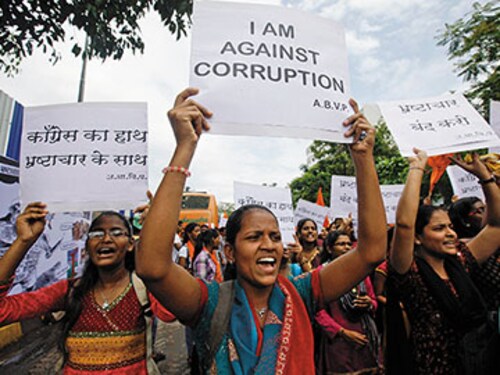Ajay S Shriram: New Government Must Hit the Ground Running
There will be immense pressure from all sides but the government must not be swayed by populism as the country cannot afford to slip any further


General Elections 2014 arrived at an interesting juncture in India’s political and socio-economic history, highlighting a number of key changes. Voter turnout far exceeded that in previous editions, the number of first-time voters increased substantially, and the election planks of political parties shifted markedly. Development and employment emerged at the top of the agenda, reflecting the political and social changes shaped by rapid growth of the last decade. Clearly the aspirations of our citizens are rising.
The next government has the opportunity to ride this aspiration tide to craft a new direction for the economy. The below 5 percent GDP growth in the last two years has registered with the stakeholders. This may trigger a new wave of economic reform and, hopefully, policy changes may no longer have to be carried out in a ‘reform by stealth’ mode, but by broad consensus.
The manifestos of the main political parties agree that economic growth and employment generation are the top challenges for the country. The key to achieving both objectives, as well as to tame inflation, is to kickstart a new investment cycle, particularly in infrastructure and manufacturing. As the new government’s expenditure would be constrained by fiscal considerations, it is the private sector that must take up the challenge of fresh investments. Corporate investment as a proportion of GDP has fallen by several percentage points over the last few years, but a strong infusion of policy reforms can restore investor sentiment.
Clearly the new government has to hit the ground running. There will be immense pressure from all sides however, it must not be swayed by populism as the country cannot afford to slip further. It has to, therefore, prioritise, both in terms of timing as well as sectors. Let’s take a look at some of the key issues that the government needs to address immediately. The first major occasion for policy announcement will be the Union Budget, and it must signal that it means business. Here are some specific actions that should take place within a couple of months.
One: There should be transparency in budget numbers. International rating agencies will appreciate if, for example, the full costs associated with oil and fertiliser subsidies were accounted for. Two: The budget must clearly state that there will be a fair and stable tax policy, with no retrospective amendments. Given the current trust deficit, it must settle the Vodafone and Nokia tax cases in a satisfactory manner. Three: The budget should take aggressive steps to contain fiscal deficit. This is essential as it has a strong bearing on inflation and monetary policies. There should be no holy cows, particularly as difficult decisions are best taken during the early period. Four: Specific steps on inflation control need to be spelt out. Five: A determined commitment to fast-tracking projects in advanced stages is a must. While the Project Monitoring Group has resolved issues pertaining to over 150 projects involving investment of more than Rs 1,000 crore each, it needs to ensure action on the ground.
Immediately after the budget, some other steps in the medium-term framework of three to six months would include the introduction of the Goods and Services Tax (GST). This is essential to boost investments. GST alone can add over 1.5-2 percentage points to the GDP growth rate by making India a single market and improving supply-chain efficiencies.
High inflation has led to an elevated interest rate structure that has discouraged investments and lowered consumer demand. The government must work with the central bank to lower interest rates. Further, to temper food price rise, it is important to delist perishables from the Agriculture Produce Marketing Committee (APMC) Act, as also to ensure that its provisions are implemented to allow farmers to sell to markets of their choice.
Exports must be revived by addressing transaction costs and economic competitiveness. Free trade agreements can be better leveraged by identifying sectors of advantage for India and promoting them. A concerted effort to attract FDI should be high on the policy agenda, including fast-tracking proposals, opening up sectors such as multi-brand retail and defence, and engaging with overseas investors through various platforms. Unfortunately, a country that needs capital investment is today a net exporter of capital.
Mechanisms that can handle key bottlenecks in the take-off of projects, both at the central and state levels, are mandatory. The government must demonstrate its commitment to work with states and opposition parties in a constructive and consultative manner.
While it is not necessary to demarcate medium- and long-term measures in water-tight compartments, some of the steps that are important in the six-month-plus horizon are:
Industry is increasingly conscious of the fact that it needs to gain the confidence of the government, civil society and the public at large. It must rise to the occasion in setting high standards of integrity. This is more so because with the increasing size of corporations, their actions have far-reaching implications towards people and the society in which they operate.
The points listed above are by no means exhaustive, but merely indicative. If the will is there, this is not a tall order. Industry would urge the next government to quickly start work on the blueprint for the next wave of reforms and economic growth.
We would be active partners in this effort and will engage strongly with the new policymakers to improve living standards of our citizens, and eradicate poverty.
First Published: May 19, 2014, 06:40
Subscribe Now